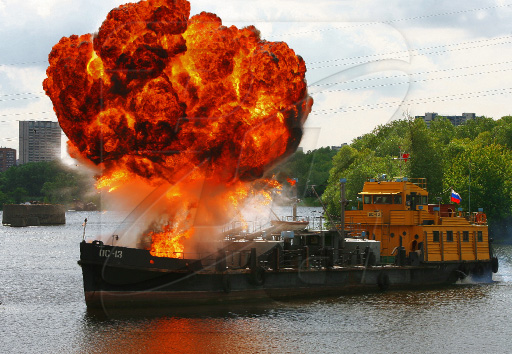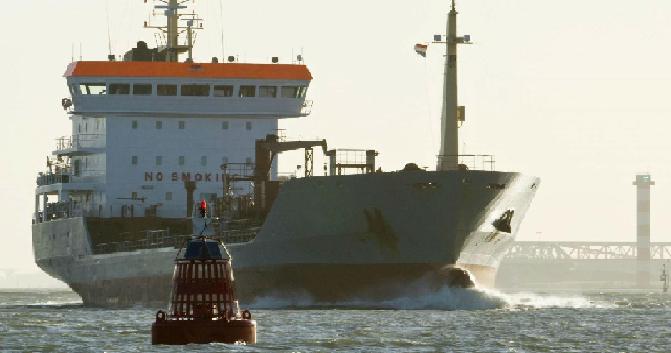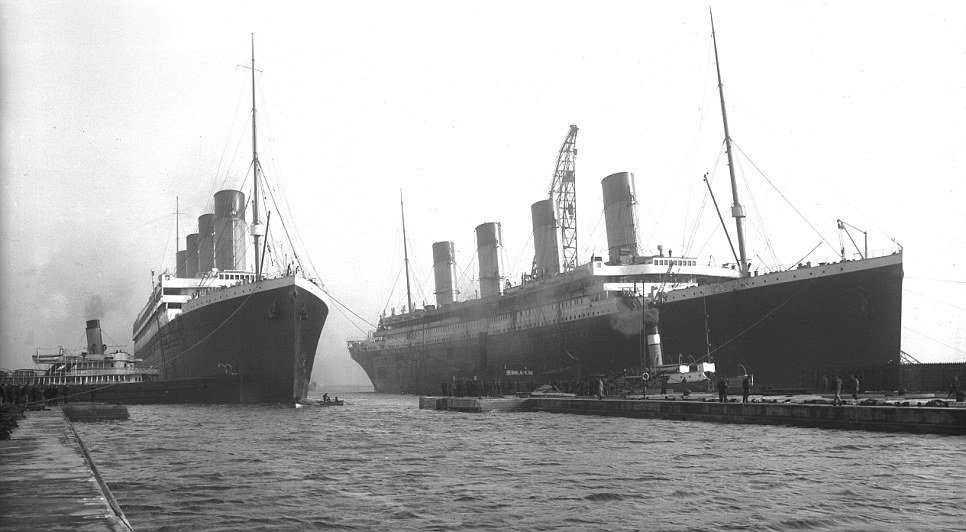
Installation of inert gas systems aboard tanker ships is to minimize the danger of explosion or fire on cargo tankers. This is an ever existent danger because of the nature of the cargo which the tankers carry. In order to reduce the risk of fire one of the three elements that are necessary to cause ignition needs to be eliminated. The three elements that are necessary for combustion are:
- Fuel – a combustible element mostly hydro-carbon vapors in case of ships
- Heat – this component is represented by the spark that can be produced in various ways.
- Oxygen – combustion is supported by oxygen.
For combustion to happen all three element but be available.
If one of the elements can be eliminated from the equation that the risk of explosions and fire can be eliminates all together. Inert gas systems are developed and installed on board for this purpose.
Element elimination
Fuel due to the nature of the cargo being transported it is quite impossible to eliminate this element. The fuel cargo tankers carry flammable fuels and this is their purpose so elimination of fuel is not an option.
Energy due to many sources that can cause energy, this element is also quite impossible to eliminate since artificial energy source can be eliminated like heat and flame but natural energy sources like static energy cannot be prevented.
Oxygen is the element that can be eliminated; this can be achieved through inert gas systems. It is known that the earth’s atmosphere consists of 21% oxygen, and inert gas systems are developed to keep the oxygen level within the cargo holding area below ignition level.
Explosive limits.
For combustion to take place oxygen must be between 2 and 10% of the air. To reduce oxygen to safer level oxygen within the cargo holding area must be reduced by pumping an inert gas inn that replaces the oxygen. An inert gas is a gas that does not support ignition such as Carbon Dioxide CO2 and Nitrogen N2. Between these to limits the mixture is inflammable and can explode.
When the mixture is below the lower limit of 2% the mixture it to lean to combust where as when the mixture is above 10% the mixture is to rich to burn. An atmosphere containing less than 10% oxygen CAN NOT BURN WHATEVER ITS CONCERNTRATION LEVEL MAY BE. This atmosphere is known as THEORETICALLY INERT.
Inert Gas Systems
There are some measures that need to be taken to make sure that oil tankers are protected by using inert gas systems. The cargo holding tanks must be isolated completely from the atmosphere. This can be achieved by maintaining a higher pressure within the tank compared to the atmosphere pressure.
While offloading the cargo inert pressure must be continually pumped to replace the volume being offloaded. This must be done to prevent oxygen being sucked in to the tanks as fuel volumes reduce. At all time the inert gas pressure must be maintained above atmospheric pressure.
While loaded or dry-dock the ship is continually protected using inert gas. The only time that inert gas not present is if there is some maintenance being carried out in the cargo holding tanks
Usage of inert gas in cargo tankers means more safety during all operations like tank cleaning, loading, and offloading and during voyages.
Production of Inert Gas
Inert gas used on ships can be produced in the following ways:
- As a normal independent Generator System that burns fuel oil to produce CO2.
- Using the after burn of the exhaust gas from the auxiliary engines.
This gas mainly consists of Nitrogen N2 and Carbon Dioxide CO2 and is cleaned to remove all soot SO2 using sea water through a system called a scrubber. Top maintain a constant supply of inert gas the ship must run a flue gas plant. Once the gas is produced it is piped to the scrubber for purification before being pumped to the fuel storage tanks.
WARNING: when running the flue plant the boiler should be run on low load to prevent sucking of Air.
Inert Gas Systems on Ships,









